Titles: Rêverie, Gaspillage, Exagération, Simplicité, Gourmandise, Abondance, Violence, Fantaisie, Faiblesse, Curiosité, Obligeance, Surprise.
Contributors:Gaston Hoffmann [Santippa] (French, 1883 – 1977)
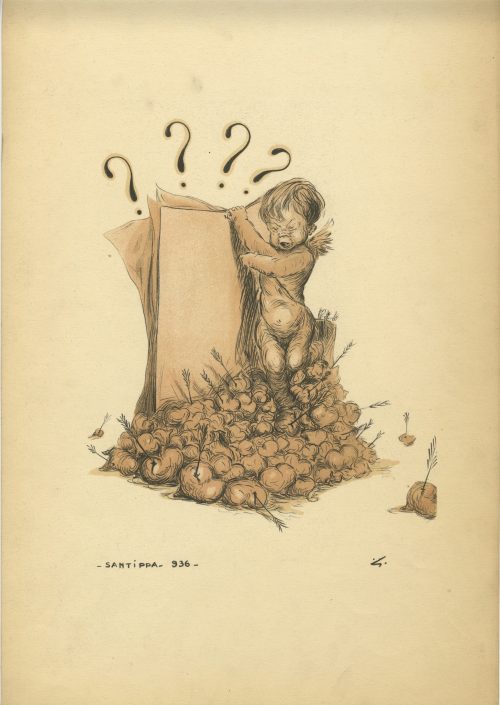
Titles: Rêverie, Gaspillage, Exagération, Simplicité, Gourmandise, Abondance, Violence, Fantaisie, Faiblesse, Curiosité, Obligeance, Surprise.
Contributors:Gaston Hoffmann [Santippa] (French, 1883 – 1977)
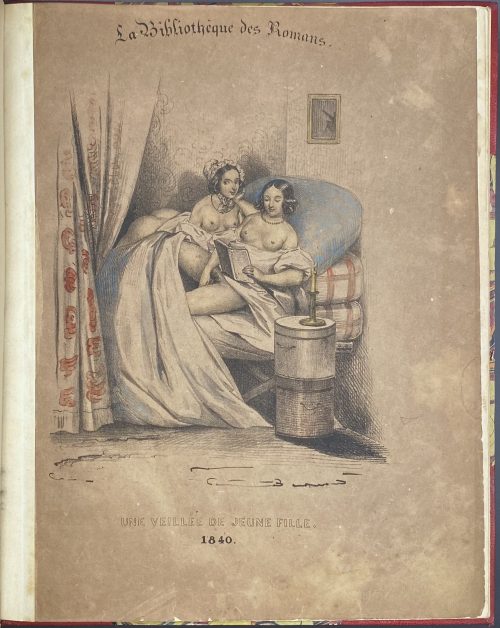
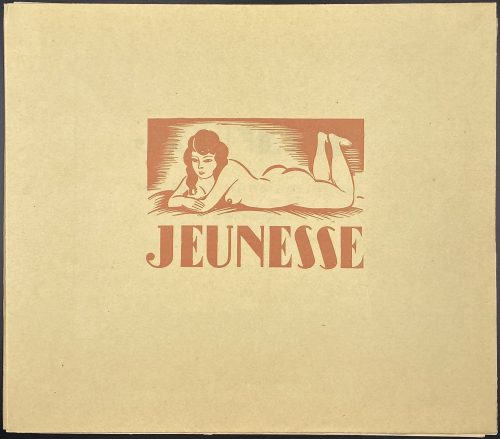
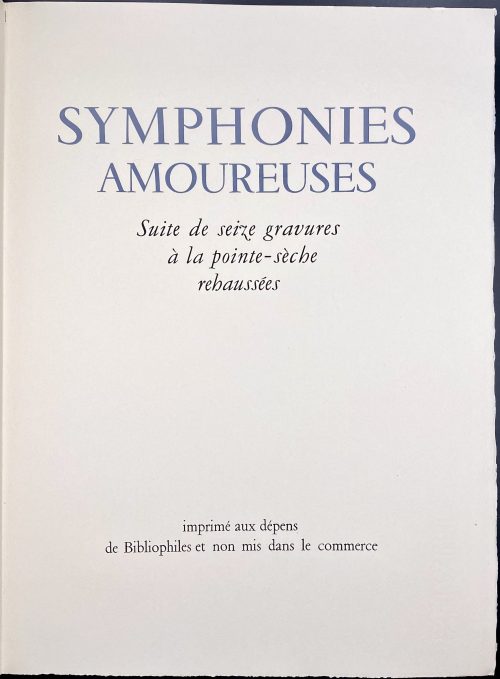
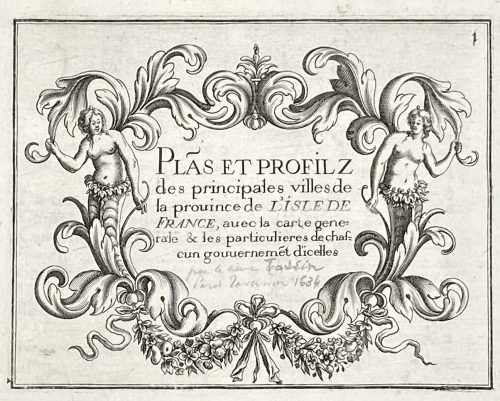
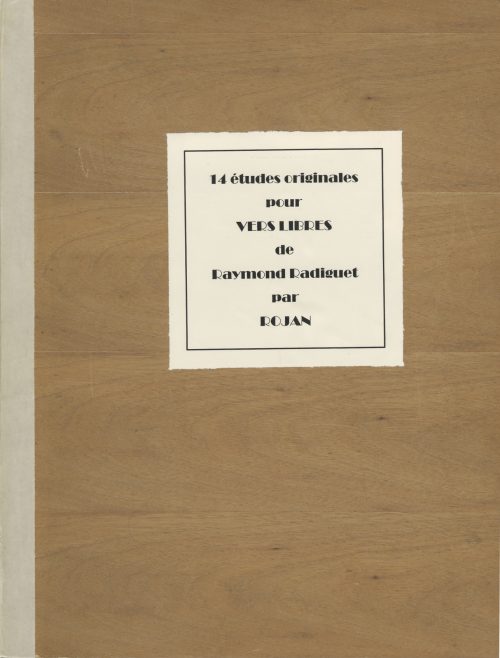
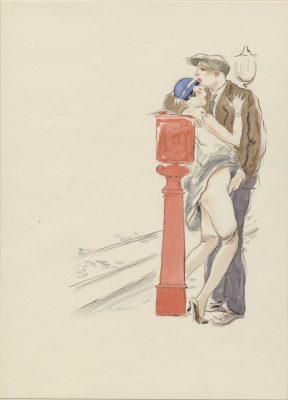
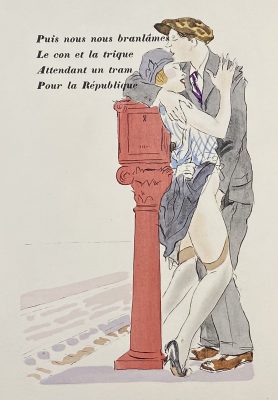



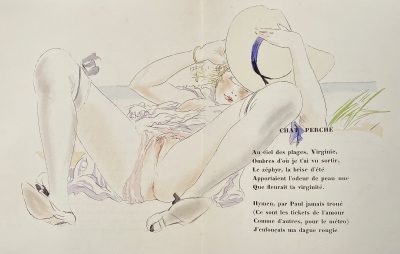
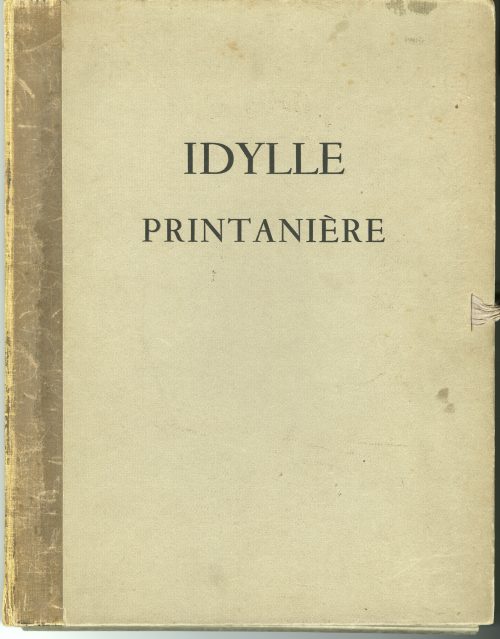
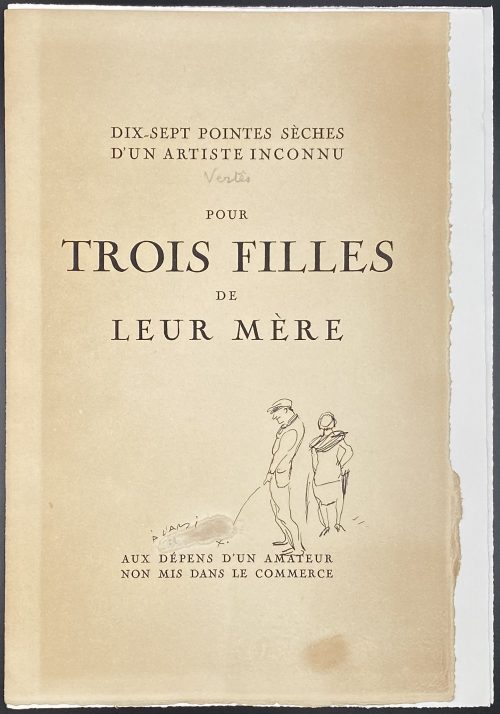
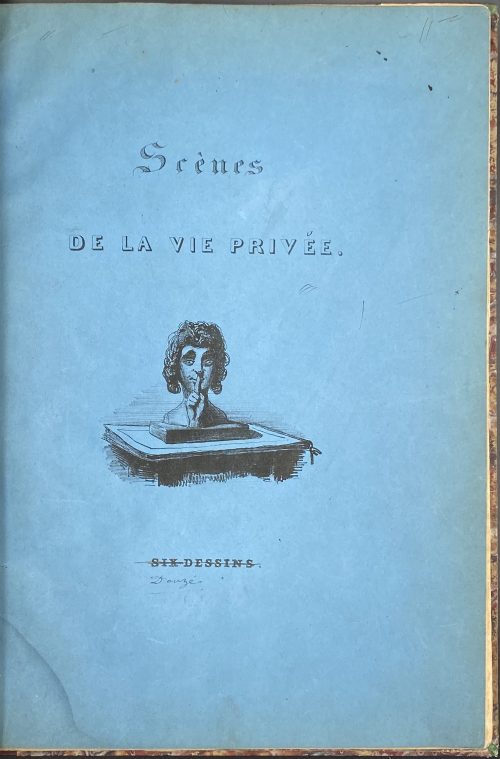
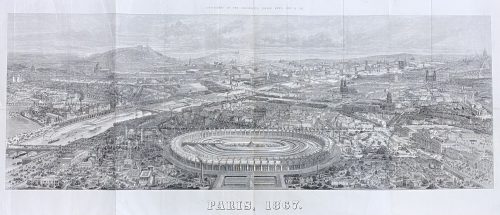
Lithography on paper by Charles Fichot (French, 1817 – 1903), published in a supplement to the Illustrated London News of July 6, 1867.
The construction on the foreground is the International Exposition of 1867 (Exposition universelle d'art et d'industrie de 1867). Dimensions: Sheet: 130 x 58 cm; Image: 118 x 43 cm.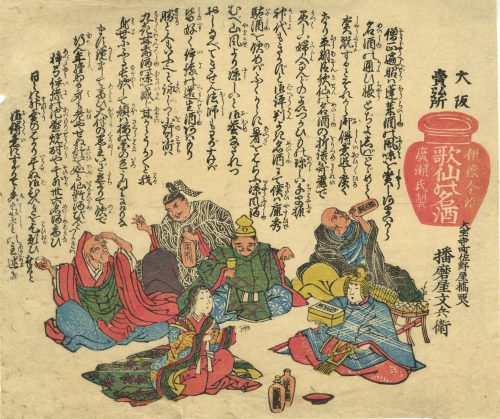
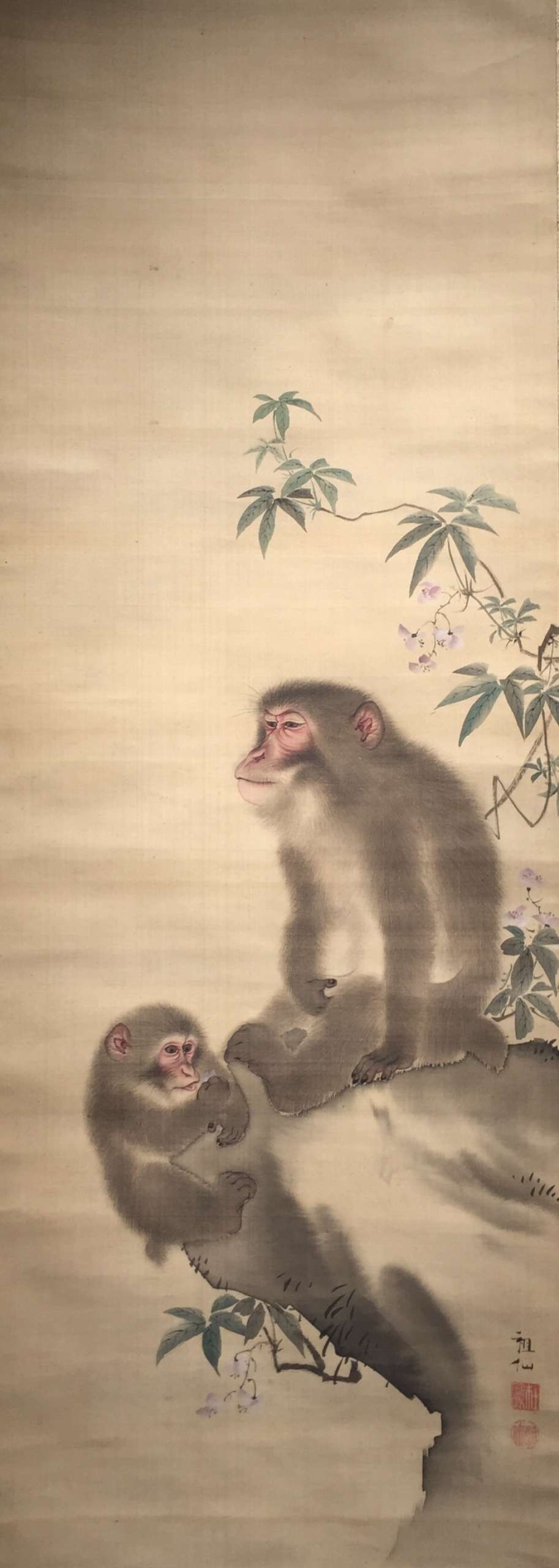
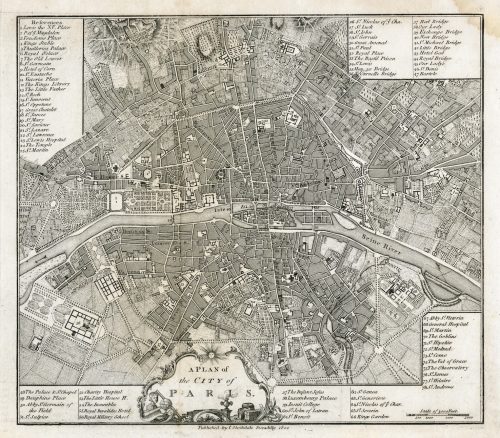
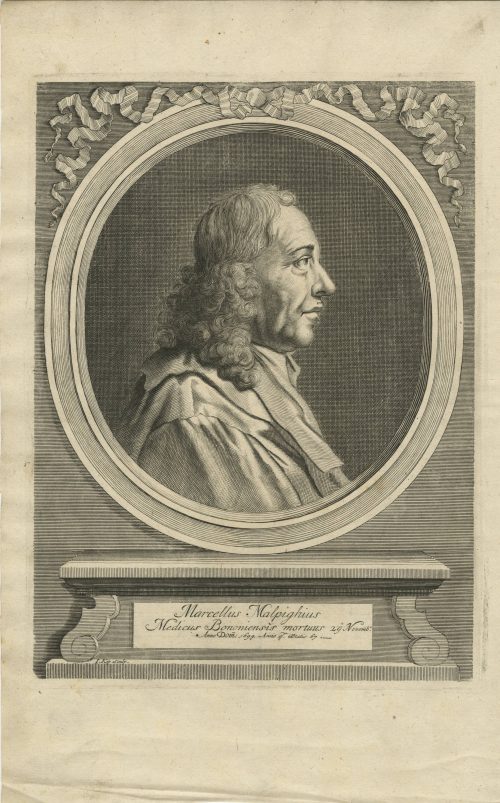
A portrait of Marcello Malpighi from his book Opera posthuma: figuris aeneis illustrata, quibus praefixa est ejusdem vita a seipso scripta, Londini:Churchill, 1697. Inscription: Marcellus Malpighius | Medicus Bononiensis mortuus 29 Novemb. Anno Dom. 1694. Anno aetatis 67. I. Kip. sculp.
Marcello Malpighi (10 March 1628 – 29 November 1694) was an Italian biologist and physician, who is referred to as the "Father of microscopical anatomy, histology, physiology and embryology" [Wikipedia].
From European Journal of Anatomy 22(5):433-439 · September 2018, an article by Sanjib Ghosh and Ashutosh Kumar 'Marcello Malpighi (1628-1694): Pioneer of microscopic anatomy and exponent of the scientific revolution of the 17th Century': Italian anatomist and an eminent scientist who significantly contributed to the advancement of the anatomical sciences in the 17th century. Malpighi was one of the first to use the compound microscope (an instrument designed by Galileo in 1609) and made the most important discovery of his life in 1661 when he identified capillaries as connecting vessels between small arteries and veins in the lungs. Malpighi thus provided the missing link in William Harvey's theory of blood circulation. He made significant contributions in the field of embryology based on his observations on chick embryo, and his efforts provided deep insights into the development of the heart and the nervous system. His communications based on microscopic studies scripted valuable details on the structural organization of organs like the liver, kidney and spleen. He identified the hepatic lobule as the fundamental unit of the liver and noted that bile was being secreted by these lobules and not from the gall bladder (the popular belief then). In the kidney, he discovered the glomerulus (Malpighian Corpuscle) and was the first to observe the convoluted tubules in the renal cortex. He was the first to describe the presence of lymphatic bodies (Malpighi's Corpuscle) in the spleen. Although he was exceedingly successful in his scientific activities, his life was fraught with unfortunate events and savage criticism from detractors arising out of professional jealousy and personal feuds. Nevertheless, his exploits were instrumental in understanding the human microscopic anatomy (histology) and his accomplishments have etched his name in the pages of medical science forever.
The portrait was engraved by Johannes "Jan" Kip (1652/53, Amsterdam – 1722, Westminster) - a Dutch draftsman, engraver and print dealer.
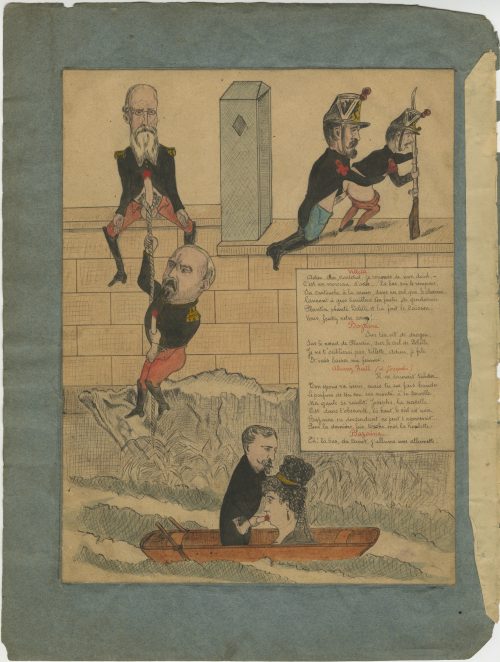
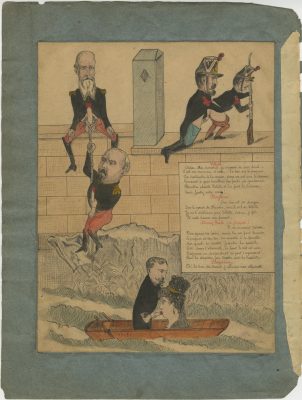
Villette Adieu, cher maréchal, je réponds de mon dard C’est un morceau d’acier… Là bas, sur le rempart, Sa cartouche à la main, dans un cul qui le charme, Lançant à gros bouillons son foutre de gendarme Plantin plante Delille et lui font le Caisson. Bazaine Sur ton vit de dragon Sur le nœud de Plantin, sur le cul de Delille, Je ne t’oublierai pas, Villette, adieu, je file Et je vais baiser ma femme. Alvarez Rull (à Josépha) Il ne saurait tarder, Ton epoux va venir, mais tu me fais bander, Le parfum de ton con me monte à la cervelle, Ma gaule se raidit . Josépha, la nacelle Est dans l’ obscurité, là haut, le ciel est noir, Bazaine en descendant ne peut t’ apercevoir … Pour la dernière fois, torche moi la houlette. Bazaine Eh ! là bas, du canot, j’allume une allumette!Villette Farewell, dear Marshal, I vouch for my dick. It’s like a steel rod … Over there, on the ramparts, Plantin, his dick in hand, pounds Delisle’s beckoning ass And fills it with his bubbling gendarme’s cum. Bazaine For your dragoon’s dick, For Plantin's prick, for Delisle's ass, I won't forget you, Villette, goodbye, I'm leaving And I'm going to fuck my wife. Alvarez Rull (to Josépha) Hurry up, Your husband is coming, but I got a hard on you, The scent of your cunt penetrates my brain, My rod stiffened. Josépha, the gondola Is in the dark, the sky is black, Bazaine coming down and cannot see you... Give me one last blowjob.
Bazaine Hey! Over there, from the canoe, I light a match!
French marshal Achille Bazaine capitulated to Bismarck during the Franco-Prussian war on 27 October 1870. In 1873, he was tried for treason and received a death sentence, later commuted to 20 years' imprisonment. Bazaine was incarcerated in the Fort Royal on Île Sainte-Marguerite, from which he escaped on August 9–10, 1874, with the help of Colonel Villette [Willette], his wife Josefa [Pepita Peña], and her nephew Alvarez Rull. They sailed to Genoa in Italy and from there to London. Plantin and Delisle were prison guards. The story was described in detail during the Trial of Col. Villette and his Accomplices in 1874 and published later in Robert Christophe. La Vie tragique du maréchal Bazaine. — Paris: Vautrain Jacques, 1947.2) Impératrice Eugénie: 218 x 165 mm
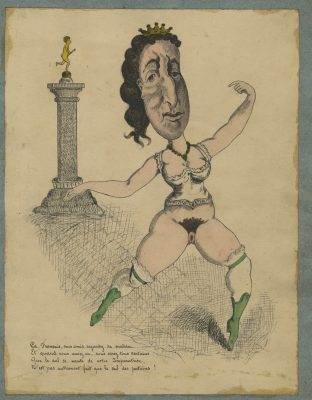
Ça, Français, mes amis, regardez sa matrice, Et quand vous aurez vu, vous serez tous certains Que le cul si vanté de votre Impératrice, N’est pas autrement fait que le cul des putains!That, French, my friends, look at her cunt, And when you have seen, you will all be certain That the so acclaimed ass of your Empress, Is no different than the ass of whores! 3) Napoléon III: 215 x 168 mm
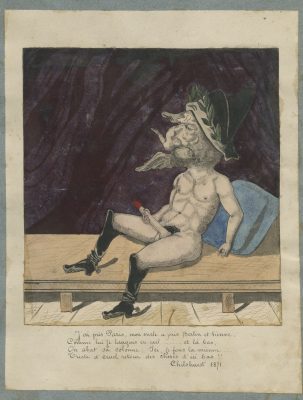
J’ai pris Paris, mon oncle a pris Berlin et Vienne. Comme lui je languis en exil …… et là bas, On abat sa colonne; Ici, je fous la mienne…. Triste et cruel retour des choses d’ici bas!! Chilshurst 1871. [i.e. Chislehurst]I took Paris, my uncle took Berlin and Vienna. Like him, I, too, languish in exile. His column there was demolished; I’m jerking mine off here…. Cruel and sorrowful deeds!! 4) La confession: 216 x 168 mm (Georges Darboy?)
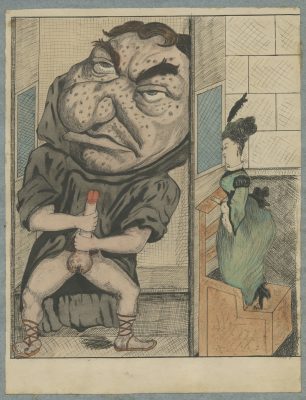 5) Napoléon III et Thérèsa (chanteuse Désirée Emma Valladon): 216 x 176 mm
5) Napoléon III et Thérèsa (chanteuse Désirée Emma Valladon): 216 x 176 mm
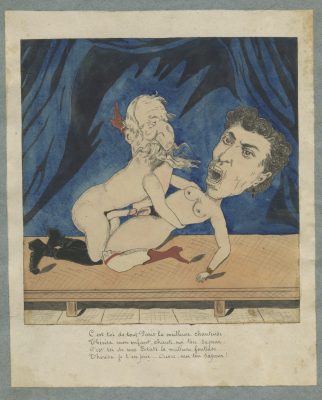
C’est toi de tout Paris la meilleure chanteuse, Thérèsa mon enfant, chante-moi ton sapeur. C’est toi de mes Etats la meilleure fonteuse.. Thérèsa je t’en prie … Ouvre-moi ton sapeur!You, the best singer in all of Paris, Teresa, my child, sing for me where to insert. You are the best padding in my entire country… Teresa, please... Open your slit for me! 6) Thiers: 219 x 168 mm
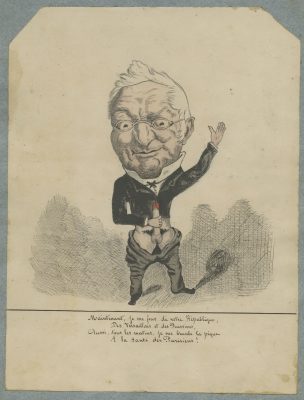
Maintenant, je me fous de votre République, Des Versaillais et des Prussiens, Aussi, tous les matins, je me branle la pique A la santé des Parisiens!Yes, I don’t care about your Republic now, About Versailles and the Prussians, And every morning I jerk off For the health of Parisians! 7) Émile Ollivier/Rochefort/Jules Favre/Gambetta : 212 x 168 mm
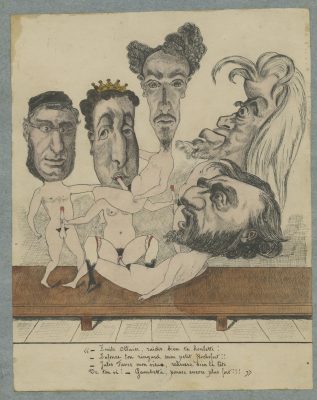
« — Emile Ollivier, raidis bien la houlette! — Enfonce ton ringard mon petit Rochefort!! — Jules Favre mon vieux, redresse bien la tête De ton vi! — Gambetta, pousse encore plus fort!!! »Emile Ollivier, tighten your dick! - Stick in your poker, my little Rochefort!! - Jules Favre, old man, straighten your dickhead Damn it! – Gambetta, push even harder!!!
Characters: Bazaine, François Achille (French, 1811 – 1888) Darboy, Georges (French, 1813 – 1871) Favre, Jules (French, 1809 – 1880) Gambetta, Léon (French, 1838 – 1882) Montijo, Eugénie de (Spanish-French, 1826 – 1920) Napoleon III [Bonaparte, Charles-Louis Napoléon] (French, 1808 – 1873) Ollivier, Émile (French, 1825 – 1913) Peña Azcárate, Josefa [Peña, Pepita] (Mexican-French, 1847 – 1900); Alvarez Rull – nephew of Josefa Peña Azcárate. Rochefort, Henri (French, 1831 – 1913) Thérésa [Valladon, Désirée Emma] (French, 1836 – 1913) Thiers, Adolphe (French, 1797 – 1877)
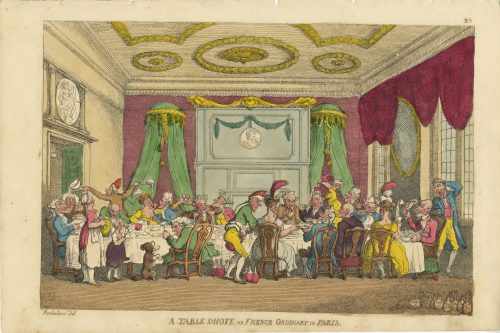
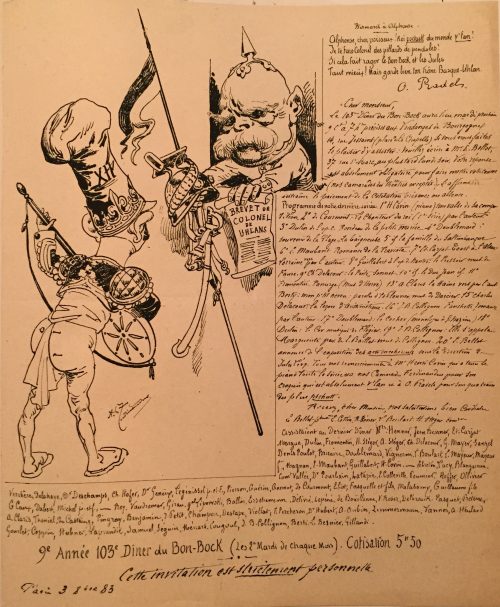
Cher monsieur, Le 103ème Dîner du Bon-Bock aura lieu mardi prochain / à 7h précises aux Vendanges de Bourgognel / 14, rue Jessaint (place de la Chapelle). Si vous nous faites le plaisir d’y assister : Veuillez écrire à Mr. E. Bellot, / 37 rue St Marc, au plus tard lundi soir. Votre réponse / est absolument obligatoire pour faire mettre votre couvert (nos camarades des théâtres exceptés.) L’affirmative entraine le paiement de la cotisation présence ou absence. / Programme de notre dernière soirée. 1e H Covin (piano) une valse de sa compo- / sition. 2e de Courment : Le Chanteur du roi (1ère série) par l’auteur. / 3e Dulin de l’o.p.e. Rondeau de la petite mariée 4e Doublemard : / souvenir de la Plage La baigneuse 5e "la famille des Saltimbanque" / 6e C. Maubant Romance de la Traviata. 7e Ct. Carjat Toast à l’Alsace-/Lorraine vers par l’auteur. 8e Guillabert de l’ap. de Nantes : le Pressoir mud. de / Faure . 9e Ch. Delacour : le Poete, Sonnet. 10e if. le Duc Jean if. 11e / Fromentin. Panurge (Mus. d’Hervé) 13e A. Claris la Haine vers par l’aut. / Benty : mon p’tit neveu : paroles d’Po Clouvier. mus. de Darcier. 15e Charles / Delacour : la leçon d’Arithmétique. 16e J.B. Collegnon Fanchette, romance/ par l’auteur. 17e Doublemard : le Cocher (monologue de P. Marzin) 18e / Dulin : le Cor musique de Flégier. 19e J. M. Collignon : Elle s’appela/ Marguerite par. De L. Baillet mus de Collignon. 20e L. Bellot / annonce de l’exposition des arts incohérents sous la direction de / Jules Féry. Tous nos remerciements à Mr. Henri Covin qui a tenu le/ piano toute la soirée et a nos Camarades Ferdinandus pour son / croquis qui est absolument v’lan et à O. Pradels pour son quatrain/ des plus pachutt. // Recevez, cher Monsieur, nos salutations bien Cordiale / E. Bellot, G durater E. Cottin, R. Géner, L. Bocilart, H. Héger comba / assistaient au Dernier Dîner Mrs : Henner, Jean Brenner, Et. Carjat / Margue, Dulin, Fromentin, H. Stéger, A . Stéger, eh. Delacour, G. Mayer, Sanzel/ Denis Poulot, Bricaire, Doublemard, Vigneron, T. Boulart, L. Mayeur, Mayeur/ flle, Magnan, E. Maubant, Guillabert, H. Corin. ___ Lebreton, Tucy, Blangarnon. / Comt. Vallée, Dr Pourbain, Latapie, E. Colleville, Roumier, Hoffer, Ollivier / Verchère, Delhaye, Dr Deschamps, Ch. Hofer, Dr Geneirp, Péginissel p, et F. , Pierson, Guérin, Cronnot, de Courmont, Eliot, Fasquelle et filsm Malasamy, Guillaume fils /G Caux, Dabert, Michel p, et f.s, ___Rey. Vaundremer, Girau, general Lipovvski, Ballin, Ersetemenn, Délivré, Lepéné, de Bouillanne, V. Roser, Delbroueth. Pasquet, Treterre, / A. Claris, Thoniel, du Castaings, Pingray, Benjamin, I. Petit, Champon, Destape, Viotlat, F. Percheron, Dr Hubert, A. Aubin, Zimmermann, Vannes, A. Heulard, / Gourlet, Coppin, Hubner, laprandie, Samuel, Séguin, Ménard, Cougoul, J. B. Collignon, Beri L. Besnier, Gillandi. // 9e Année 103e Diner du Bon-Bock (Les 2e Mardi de Chaque Mois). Cotisation 5h50 / Cette invitation est strictement personnelle / Paris 3 8bre 83.Bismarck à Alphonse
Alphonse, cher poissure! Roi pschutt du monde u’lan! Je te fais Colonel des pillards de pendules! Si cela fait rager le Bon-Bock et les Jules Tant mieux! Mais garde bien to Trône Basque-Uhlan. O. Pradels.
Bismarck to Alphonse Alphonse, dear annoyance! King shushh from the Uh'lan world I name you Colonel of the looters of pendulums! If this makes the Bon-Bock and Jules angry All the better! But protect your Basque-Uhlan throne well. O. Pradels.Dear sir, The 103rd Dinner of the Bon-Bock will take place next Tuesday at 7 pm precisely at the Grape Harvest of Bourgognel, 14, Jessaint street (la Chapelle plaza). If you would do us the honour of coming: Please write to Mr E. Bellot, 37 St Marc street, on Monday night at the latest. Your answer is absolutely mandatory to prepare the place settings (our friends from the theatres excluded.) The 'yes' comes with a payment of the due whether or not you end up attending. Program for our last evening. 1st – H. Covin (piano) a waltz composed by him. 2nd – Courment: Le Chanteur du roi (King's singer) (1st series) by the author. 3rd – Dulin: Rondeau from opera "Le petite mariée" (The Little Bride) 4th – Doublemard: Memory of the bather's beach 5th – "The Saltimbanque family" 6th – Maubant: Romance of "La Traviata". 7th – Étienne Carjat Toast to the Alsace-Lorraine, verses by the author. 8th – Guillabert from the opera "Nantes: le Press mud" by Fauré. 9th – Charles Delacour: the Poet, Sonnet. 10th – "Duke Jean" 11th – Fromentin. Panurge (Mus. of Hervé) 13th – A. Claris "The Hatred" verses by the author, Benty: my lil’ nephew: lyrics by Clouvier, music by Darcier. 15th – Charles Delacour: the lesson in arithmetic. 16th – J.-B.Collegnon, "Fanchette", romance by the author. 17th – Doublemard: the Coach driver (monologue by P. Marzin). 18th – Dulin: the horn music by Flégier. 19th – J.-B. Collignon: "Her name was Marguerite", lyrics by L. Baillet music by Collignon. 20th – L. Bellot, an announcement from the incoherent arts exhibition curated by Jules Férry. All of our thanks to Mr Henri Covin who played the piano all night and to our Friends Ferdinandus for his sketch that is absolutely bam and to O. Pradels for his quatrain among the most pazazz worthy. We send you our most cordial salutation, Monsieur. E. Bellot, G. Durater, E. Cottin, R. Géner, L. Bocilart, H. Héger, Henner, Jean Brenner, Et. Carjat, Margue, Dulin, Fromentin, H. Stéger, A . Stéger, Ch. Delacour, G. Mayer, Sanzel, Denis Poulot, Bricaire, Doublemard, Vigneron, T. Boulart, L. Mayeur, Mayeur daugter, Magnan, E. Maubant, Guillabert, H. Corin. Lebreton, Tucy, Blangarnon. Comt. Vallée, Dr Pourbain, Latapie, E. Colleville, Roumier, Hoffer, Ollivier, Verchère, Delhaye, Dr. Deschamps, Ch. Hofer, Dr. Geneirp, Péginissel père et fils, Pierson, Guérin, Cronnot, de Courmont, Eliot, Fasquelle et fils Malasamy, Guillaume fils, G. Caux, Dabert, Michel père et fils, Rey. Vaundremer, Girau, General Lipovvski, Ballin, Ersetemenn, Délivré, Lepéné, de Bouillanne, V. Roser, Delbroueth, Pasquet, Treterre, A. Claris, Thoniel, du Castaings, Pingray, Benjamin, J. Petit, Champon, Destape, Viotlat, F. Percheron, Dr. Hubert, A. Aubin, Zimmermann, Vannes, A. Heulard, Gourlet, Coppin, Hubner, Laprandie, Samuel, Séguin, Ménard, Cougoul, J. B. Collignon, Berti, Besnier, Gillandi. 9th Year 103rd Dinner of the Bon-Bock (The 2nd Tuesdays of Each Month). Due 5:50 pm. This invitation is strictly personal. Paris 3 October 1883. Bismarck hands a certificate for the title of colonel along with a lance, an Uhlan helmet (Polish cavalry) and a sword to a joker. The joker wears a traditional Polish folk hat inscribed with 'XIV' and holds a guitar. ______ Comments: Émile Bellot [L. Bellot] (French, the second half of the 19th century) – engraver, model for a painting by Édouard Manet "Le bon bock", the founder of Le Bon Bock Dinner. Covin, Henri (French, 1845 – 1887) – Musician, arranger. Étienne Carjat (French, 1828 – 1906) – Journalist, caricaturist and photographer. Charles Delacour (French, 18.. – 1898) – Composer. Jean-Baptiste Collignon (French, 18..-1906) – Composer. Ange Flégier (French, 1846 – 1927) – Composer. Joseph Darcier (French, 1819 – 1883) – Composer, singer and actor. Le petite mariée (The Little Bride) – a three-act opéra-bouffe, music by Charles Lecocq, libretto by Eugène Leterrier and Albert Vanloo. La plage de la Baigneuse – beach of Saint Jean de Monts in the Vendée department in the Pays de la Loire region in western France. La Famille du Saltimbanque: L'Enfant Blessé – The Family of Street Acrobats: the Injured Child – painting by Gustave Doré (French, 1832 – 1883) produced in 1873. Henri-Polydore Maubant (1821-1902) – actor, vocalist (baritone) Gabriel Urbain Fauré (French, 1845 – 1924) – French composer, organist, pianist, and teacher. Hervé [Louis Auguste Florimond Ronger] (French, 1825 – 1892) – French singer, composer, librettist, conductor and scene painter, inventor of the genre of operetta in Paris.
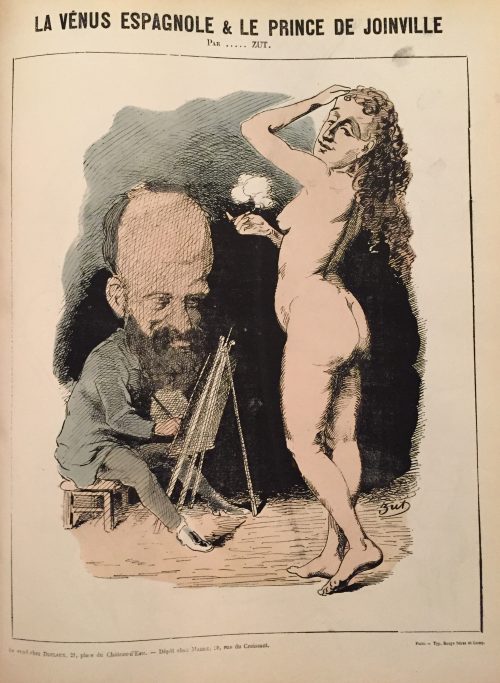
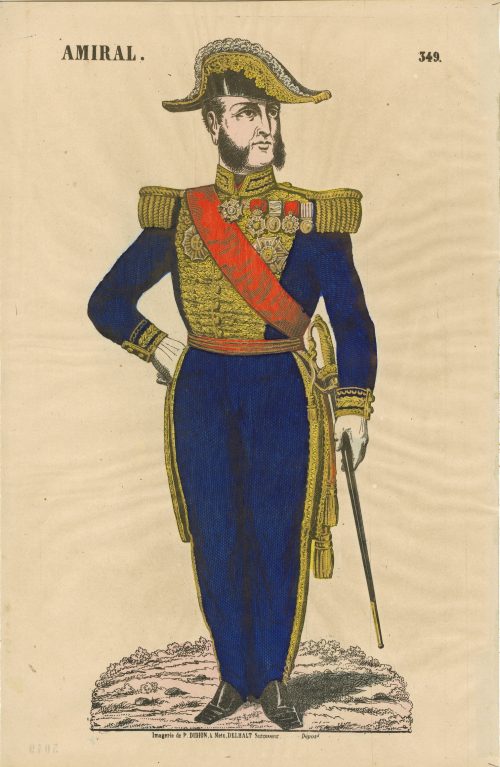
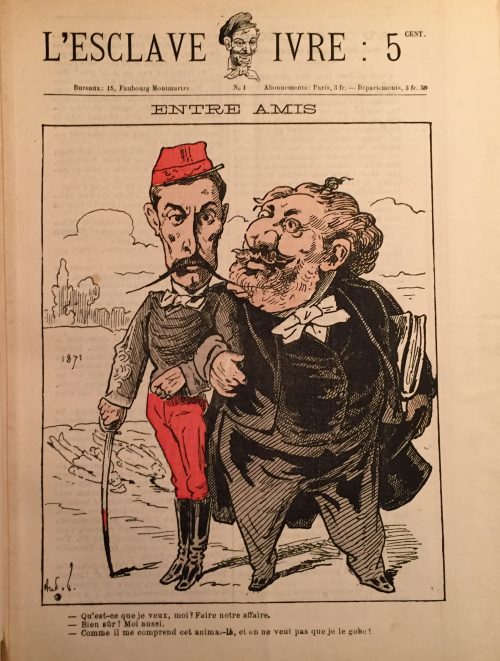
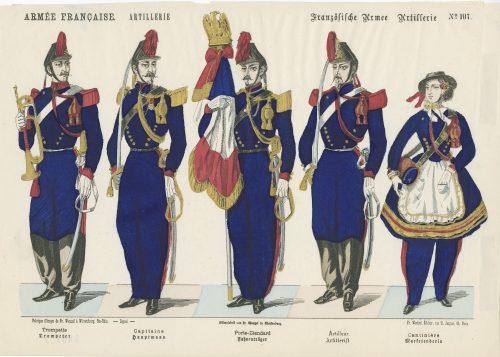
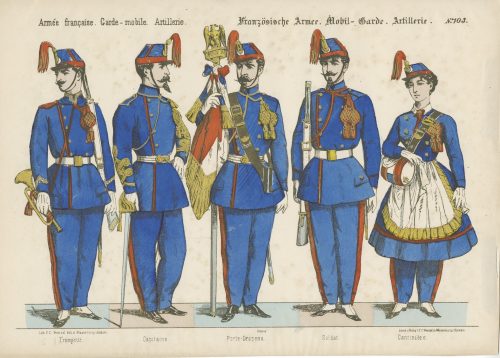
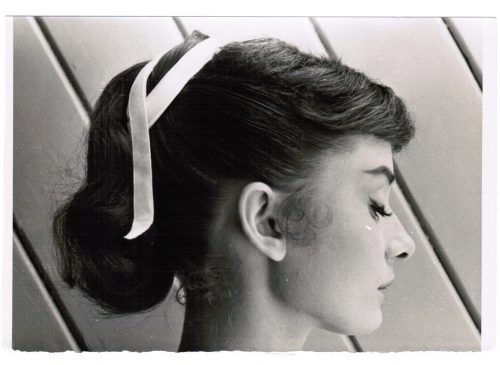
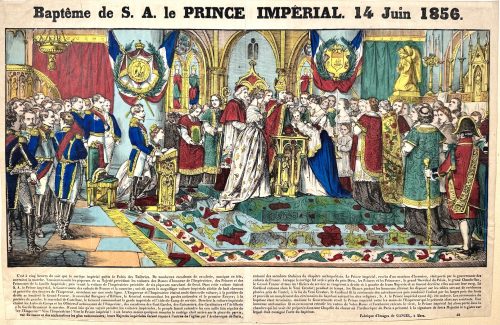
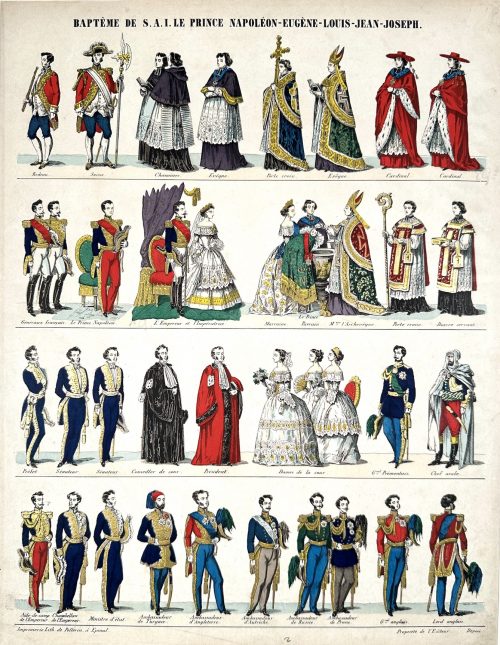
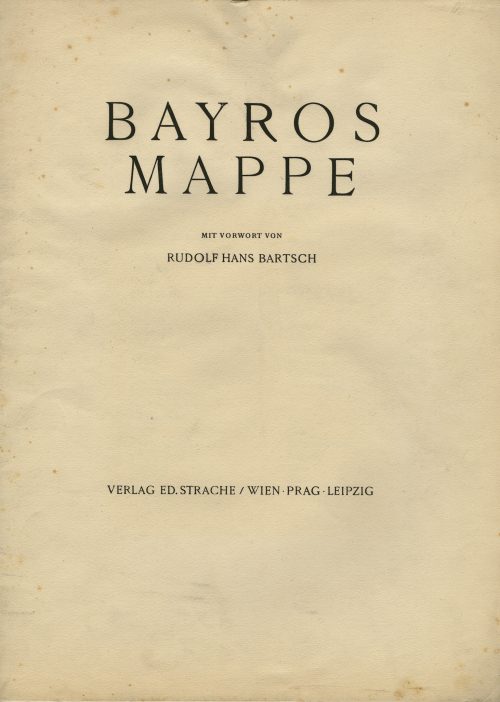
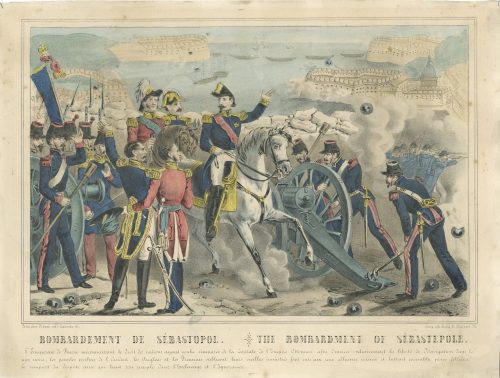
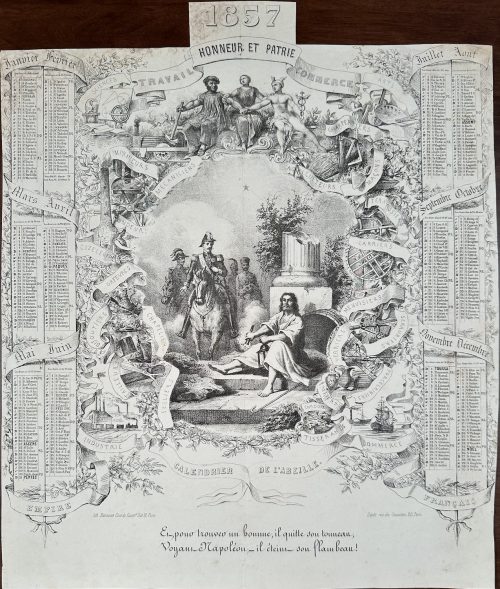
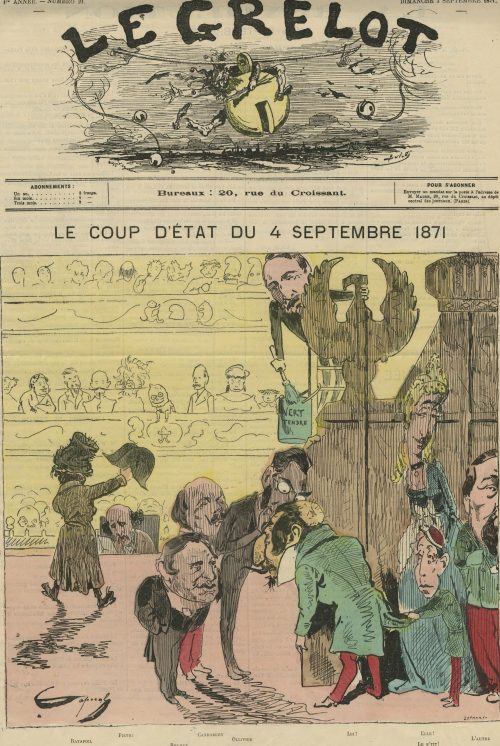
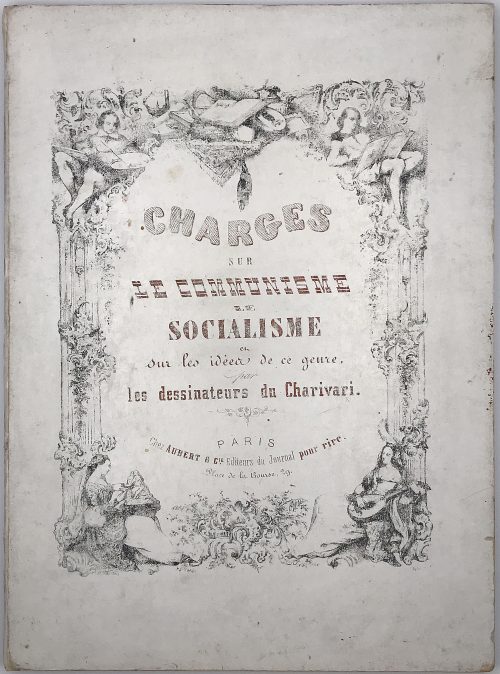
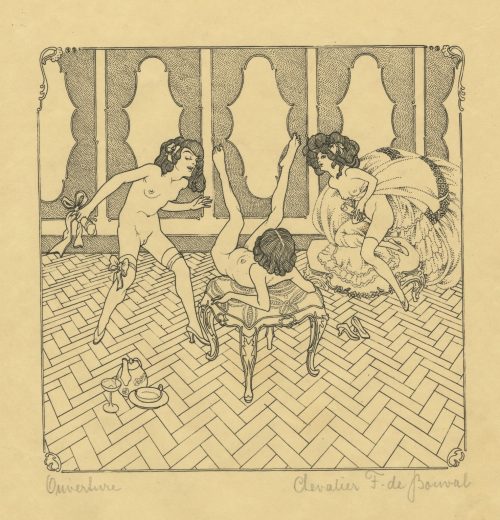

 №1: "...one of the most exotic scenes in all shunga. A Dutch kapitan is discovered coupling with a lovely Japanese courtesan, beside a large window opening upon a garden...".
№1: "...one of the most exotic scenes in all shunga. A Dutch kapitan is discovered coupling with a lovely Japanese courtesan, beside a large window opening upon a garden...".

 №2: "...a fair young harlot is seen masturbating with a grinding-pestle - a man watches intently from under bedding." [I have two specimens of this design; the one from album is more soiled but less faded].
№2: "...a fair young harlot is seen masturbating with a grinding-pestle - a man watches intently from under bedding." [I have two specimens of this design; the one from album is more soiled but less faded].
 №3: "...the artist has effectively contrasted the lovers by depicting the man's face as seen through the geisha's gauze skirt. [...] we are impressed more by strikingly elegant composition, the dramatic coloring, rather than feeling any great urge to participate in the energetic proceedings..."
№3: "...the artist has effectively contrasted the lovers by depicting the man's face as seen through the geisha's gauze skirt. [...] we are impressed more by strikingly elegant composition, the dramatic coloring, rather than feeling any great urge to participate in the energetic proceedings..."
 №4: "This scene is a most straightforward one, featuring the standard Missionary Position [capitalization by R. Lane].; but withal, the contrast of the young and naked, secret lover and the richly-clothed courtesan amid luxurious bedding..."
№4: "This scene is a most straightforward one, featuring the standard Missionary Position [capitalization by R. Lane].; but withal, the contrast of the young and naked, secret lover and the richly-clothed courtesan amid luxurious bedding..."
 №5: "In a striking lesbian scene (which has no equivalent in Utamaro, and is, incidentally, often omitted in later editions of this album), the girl at left prepares to receive the harikata (dildo) worn by the older girl at right (who holds a seashell containing lubricant)."
№5: "In a striking lesbian scene (which has no equivalent in Utamaro, and is, incidentally, often omitted in later editions of this album), the girl at left prepares to receive the harikata (dildo) worn by the older girl at right (who holds a seashell containing lubricant)."
 №6: "In the first appearance of a matronly heroine in this series, we find a widow - with shaven eyebrows and clipped hair - sporting with a handsome yound shop-clerk, mounting him with all her might."
№6: "In the first appearance of a matronly heroine in this series, we find a widow - with shaven eyebrows and clipped hair - sporting with a handsome yound shop-clerk, mounting him with all her might."

 №7: "... lady of samurai court: here, shown taking advantage of an official outing to temple and theatre, to rendezvous with a secret lover on a teahouse balcony." R. Lane considers this design the least successful in the series, especially in comparison with the same theme by Utamaro: "Utamaro female is almost ferocious in her lust for sexual gratification", which does not sound true to me. See Utamaro's sheet №5 from the album Utamakura (歌まくら, Poem of the Pillow) [courtesy The British Museum without permission]:
№7: "... lady of samurai court: here, shown taking advantage of an official outing to temple and theatre, to rendezvous with a secret lover on a teahouse balcony." R. Lane considers this design the least successful in the series, especially in comparison with the same theme by Utamaro: "Utamaro female is almost ferocious in her lust for sexual gratification", which does not sound true to me. See Utamaro's sheet №5 from the album Utamakura (歌まくら, Poem of the Pillow) [courtesy The British Museum without permission]:
 Then, as Richard Lane states, "we are flung suddenly to the bottom rung of Edo society":
Then, as Richard Lane states, "we are flung suddenly to the bottom rung of Edo society":
 №8: "Here we find a fair yotaka ('night-hawk', e.i. streetwalker) accommodating a lusty client in a lumberyard by the bank of the Sumida River".
№8: "Here we find a fair yotaka ('night-hawk', e.i. streetwalker) accommodating a lusty client in a lumberyard by the bank of the Sumida River".
 №9: '... a slightly plump harlot of the lower class receives a night visit from her lover, whose naked form she tries to cover with a cloak."
№9: '... a slightly plump harlot of the lower class receives a night visit from her lover, whose naked form she tries to cover with a cloak."
 №10: "...likely maidservant and lackey - are depicted in bath-room, their passions are all too obviously fired by steaming water."
№10: "...likely maidservant and lackey - are depicted in bath-room, their passions are all too obviously fired by steaming water."
 №11: "...this scene of courtesan and secret lover ranks high not only in Eiri's œuvre but also in the annals of the ukiyo-e genre itself. Both design and colouring are impeccable and, for this period, there is nothing even in the work of great Utamaro that really surpasses it." Again, a doubtful statement, however, this is Utamaro's design for the reader to judge:
№11: "...this scene of courtesan and secret lover ranks high not only in Eiri's œuvre but also in the annals of the ukiyo-e genre itself. Both design and colouring are impeccable and, for this period, there is nothing even in the work of great Utamaro that really surpasses it." Again, a doubtful statement, however, this is Utamaro's design for the reader to judge:
 The last design in my album is this:
The last design in my album is this:
 #13: In most reference books it goes under number 13, and we will assign this number to the sheet. "The final scene of the album features naked participants, probably samurai man and wife. The print is rather subdued in tone and colour, if not in the degree of the passion displayed..."
An additional sheet, acquired separately from a reputable dealer in New York, is usually listed as №12:
#13: In most reference books it goes under number 13, and we will assign this number to the sheet. "The final scene of the album features naked participants, probably samurai man and wife. The print is rather subdued in tone and colour, if not in the degree of the passion displayed..."
An additional sheet, acquired separately from a reputable dealer in New York, is usually listed as №12:
 №12: "One might think that Eiri has reached his peak with the preceding plate 11 - and indeed he has, in both esthetic and erotic terms. But the album is not yet finished, and the next scene lends a needed variety to the series, a slightly comic tableau featuring a middle-aged lackey attempting to forcibly seduce a servant girl of the same domicile". Utamaro's design, that inspired Eiri is here:
№12: "One might think that Eiri has reached his peak with the preceding plate 11 - and indeed he has, in both esthetic and erotic terms. But the album is not yet finished, and the next scene lends a needed variety to the series, a slightly comic tableau featuring a middle-aged lackey attempting to forcibly seduce a servant girl of the same domicile". Utamaro's design, that inspired Eiri is here:
 All descriptions are taken from Richard Lane's article at The Complete Ukiyo-e Shunga №9 Eiri, 1996. He concluded: "...Eiri's erotic series represents a major contribution to shunga art towards the close of ukiyo-e "Golden Age". In part inspired by Utamaro's classic album, this series withal constitutes a unified and original achievement, providing a cumulative effect of gracefully elegant yet glowing eroticism, which remains in the mind's eye long after the pictures themselves are far away."
I only would like to mention here that in several reference sources this album goes under name of Eisho; unfortunately, this mistake is reproduced at www.ukiyo-e.org, which miraculously shows exactly my print, but under the wrong name of the artist. The same mistake can be found at Shunga. The art of love in Japan. Tom and Mary Anne Evans. Paddington Press Ltd., 1975. ISBN 0-8467-0066-2; plates 6.74-6.77: Chōkyōsai Eishō, c. 1800. Even the British Museum edition of 2010 gives the same erroneous attribution: Chōkyōsai Eishō (1793-1801); they provide the following translation of title: "Clean Draft of a Letter" [see: Shunga. Erotic art in Japan. Rosina Buckland. The British Museum Press, 2010; pp. 110-112]. To the honour of the British Museum, I must admit that they have corrected themselves in Shunga. Sex and pleasure in Japanese art. Edited by Timothy Clark, et al. Hotei Publishing, 2013. Now, they say Chōkyōsai Eiri (worked c. 1790s-1801); they also provide a new title: "Neat Version of the Love Letter, or Pure Drawings of Female Beauty". I have already mentioned Richard Lane's version of title: "Love-letters, Love Consummated", and Chris Uhlenbeck's "Models of calligraphy". In poorly designed and printed Shunga. Erotic figures in Japanese art. Presented by Gabriele Mandel. Translated by Alison L'Eplattenier. Crescent Books, New York, 1983, the artist is named Shokyosai Eisho (beginning of the 19th century); title provided: "Models of Calligraphy". Correct attribution to Chōkyōsai Eiri also can be found at Poem of the pillow and other stories by Utamaro, Hokusai, Kuniyoshi and other artists of the floating world. Gian Carlo Calza in collaboration with Stefania Piotti. Phaidon Press, 2010; though the title is translated as "Clean Copy of Female Beauty".
All descriptions are taken from Richard Lane's article at The Complete Ukiyo-e Shunga №9 Eiri, 1996. He concluded: "...Eiri's erotic series represents a major contribution to shunga art towards the close of ukiyo-e "Golden Age". In part inspired by Utamaro's classic album, this series withal constitutes a unified and original achievement, providing a cumulative effect of gracefully elegant yet glowing eroticism, which remains in the mind's eye long after the pictures themselves are far away."
I only would like to mention here that in several reference sources this album goes under name of Eisho; unfortunately, this mistake is reproduced at www.ukiyo-e.org, which miraculously shows exactly my print, but under the wrong name of the artist. The same mistake can be found at Shunga. The art of love in Japan. Tom and Mary Anne Evans. Paddington Press Ltd., 1975. ISBN 0-8467-0066-2; plates 6.74-6.77: Chōkyōsai Eishō, c. 1800. Even the British Museum edition of 2010 gives the same erroneous attribution: Chōkyōsai Eishō (1793-1801); they provide the following translation of title: "Clean Draft of a Letter" [see: Shunga. Erotic art in Japan. Rosina Buckland. The British Museum Press, 2010; pp. 110-112]. To the honour of the British Museum, I must admit that they have corrected themselves in Shunga. Sex and pleasure in Japanese art. Edited by Timothy Clark, et al. Hotei Publishing, 2013. Now, they say Chōkyōsai Eiri (worked c. 1790s-1801); they also provide a new title: "Neat Version of the Love Letter, or Pure Drawings of Female Beauty". I have already mentioned Richard Lane's version of title: "Love-letters, Love Consummated", and Chris Uhlenbeck's "Models of calligraphy". In poorly designed and printed Shunga. Erotic figures in Japanese art. Presented by Gabriele Mandel. Translated by Alison L'Eplattenier. Crescent Books, New York, 1983, the artist is named Shokyosai Eisho (beginning of the 19th century); title provided: "Models of Calligraphy". Correct attribution to Chōkyōsai Eiri also can be found at Poem of the pillow and other stories by Utamaro, Hokusai, Kuniyoshi and other artists of the floating world. Gian Carlo Calza in collaboration with Stefania Piotti. Phaidon Press, 2010; though the title is translated as "Clean Copy of Female Beauty".
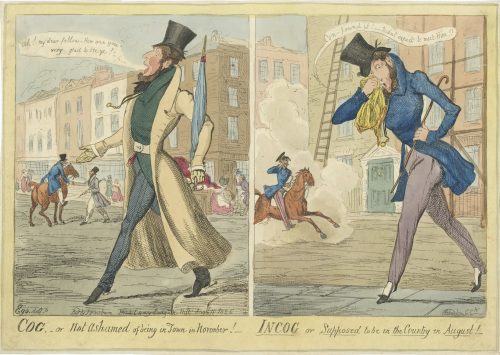
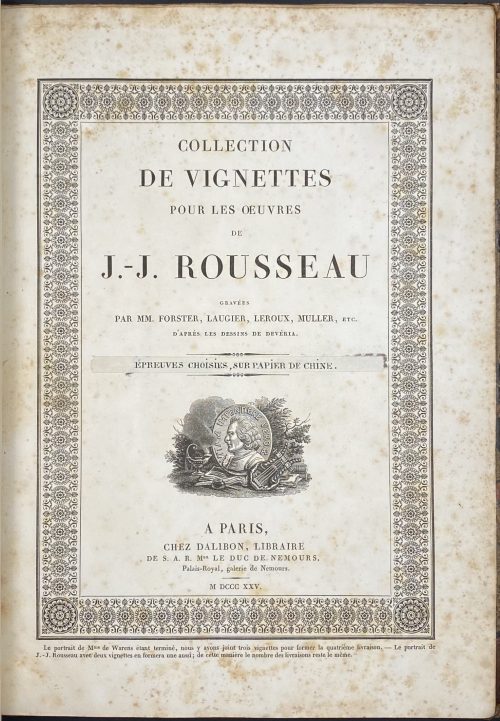
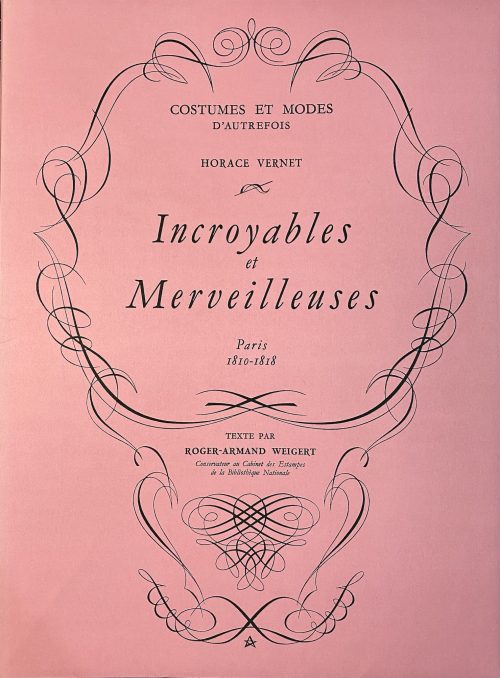
Weigert, Roger-Armand (French, 1907-1986).
Émile Jean-Horace Vernet [Horace Vernet] (French, 1789 – 1863). Gatine, Georges Jacques (French, 1773 – after 1841).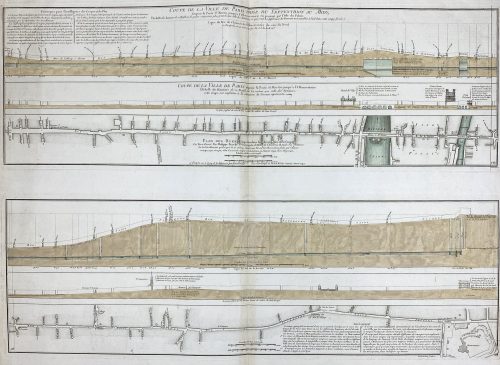
Two prints on one sheet of watermarked laid paper.
Coupe de la ville de Paris prise du septentrion au midy, depuis la porte St Martin jusqu'à l'Observatoire en passant par l'isle du Palais... Coupe de la ville de Paris depuis la porte St Martin jusqu'à l'Observatoire... Plan des rues comprises dans la direction dela coupe... / Le tout dressé par Philippe Buache... ; Desbruslins, sculpsit.
Watermark: "IHS" within circle; countermark of "FIN/ DUPUY/ AUVERGNE 1749".
LOC dates it to 1757. Gallica – to 1742, though the watermark is 1749.
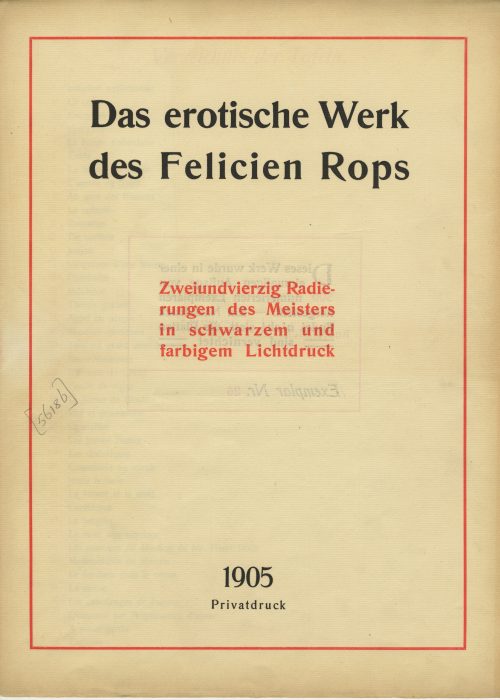
A limited-edition (№26/500) set of 42 etchings and drypoints after Félicien Rops (Belgian, 1833 – 1898), each mounted in a numbered passe-partout, printed posthumously by an anonym in Germany in 1905; in a flapped half faux suede-backed cardboard portfolio with straps, 442 x 335 mm, red embossed lettering to the front cover, bookplate of Richard Teschner (Austrian, 1879 – 1948) pasted inside.
Title-page (in a red frame): Das erotische Werk | des Felicien Rops | Zweiundvierzig Radie- | rungen des Meisters | in schwarzem und | farbigem Lichtdruck | 1905 | Privatdruk ||
Limitation (in a red two-section frame) : Dieses Werk wurde in einer | einmaligen Auflage von | 500 numerierten Exemplaren | hergestellt. — Ein Nachdruck | findet nicht statt, die Platten | == sind vernichtet == | Exemplar Nr. 26 ||
Verzeichnis der Tafeln (Table of Contents): 1. Initiation sentimentale; 2. La croix; 3. Entre-acte; 4. Holocauste; 5. La bonne hollandaise; 6. Étude; 7. La femme au pantin; 8. L’amour de Satan; 9. Au pays des féminies; 10. La volupté; 11. Evocation; 12. De castitate; 13. Joujou; 14. Vengeance d’une femme; 15. Phantasies; 16. Indolence; 17. Théâtre gaillard; 18. Appel au peuple; 19. Masques modernes; 20. Tout est grand chez les rois; 21. Marie-Madeleine; 22. L’amante du Christ; 23. Feuille de vigne; 24. La messe de Guide; 25 Viol et prostitution; 26. Le maillot; 27. Les jeunes France; 28. Les diaboliques; 29. Coquetterie au miroir; 30. Jeune homme; 31. La femme et la mort; 32. Confidence; 33. La bergère; 34. La mère aux satyrions; 35. Les exercices de dévotion de Mr. Henri Roch; 36. Mademoiselle de Maupin; 37. Le bonheur dans le crime; 38. La sirène; 39. Les cabotinages de l’amour; 40. Document sur l’impuissance d’aimer; 41. A cœur perdu; 42. Curieuse.
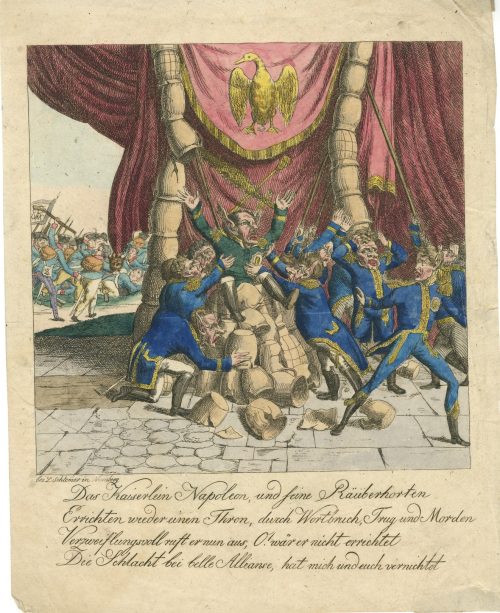
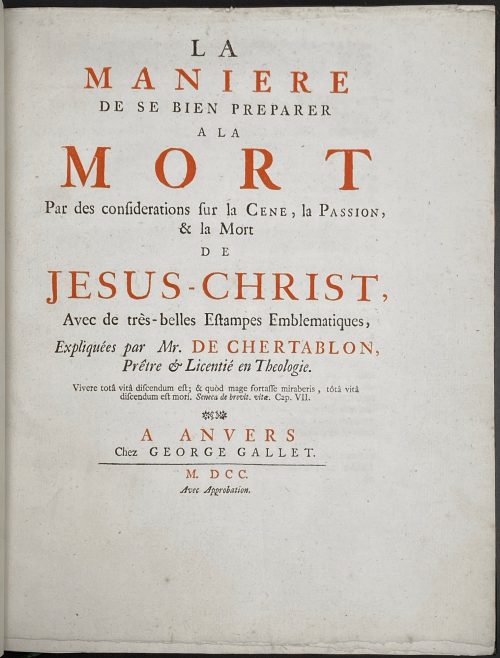
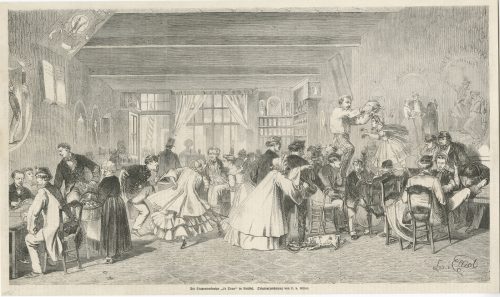
A woodcut illustration after drawing by Leo von Elliot, published at Illustrirte Zeitung, 17 January 1863. English translation: Student bar "The Hole" in Brussels.
The official name of this bar, located at Rue des Sols in Bussels, was "À la vue de l'Université" (In sight of the University). This was the place where the students of the Université libre de Bruxelles (Free University of Brussels), and especially the members of Société, ou Cercle, des Crocodiles (The Crocodile Society, or Circle), gathered in the 1860s.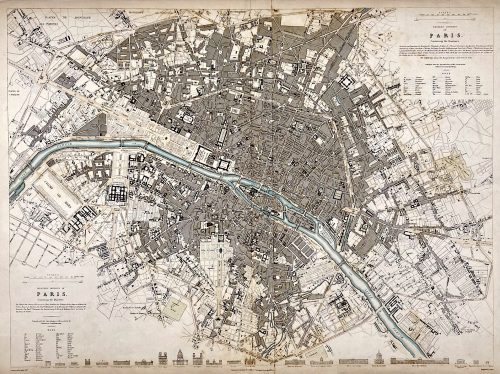
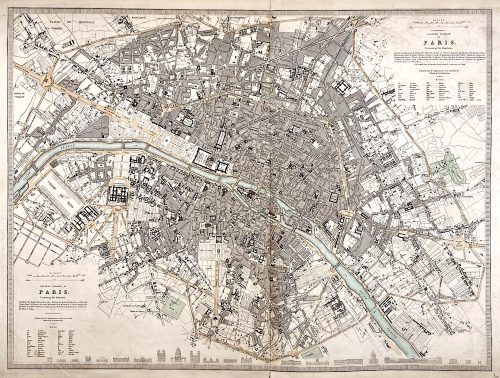
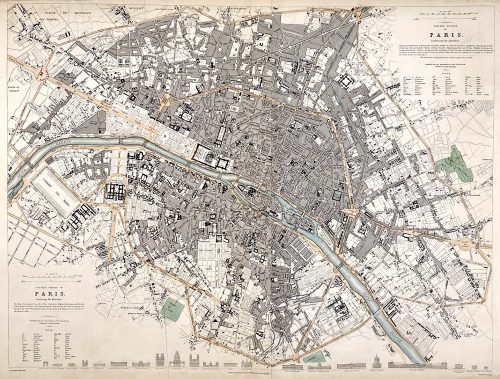
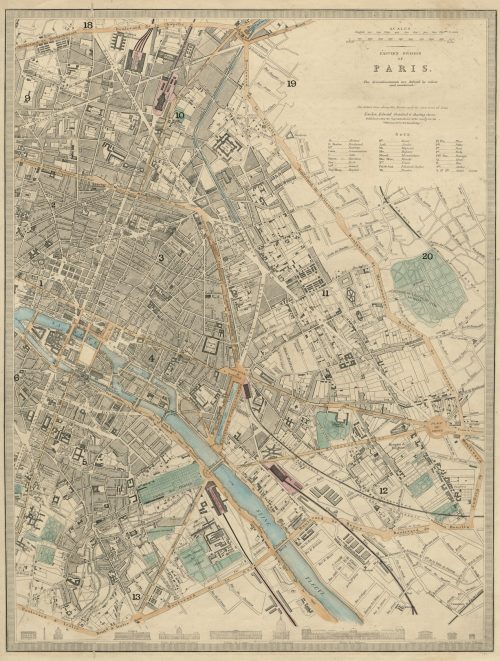
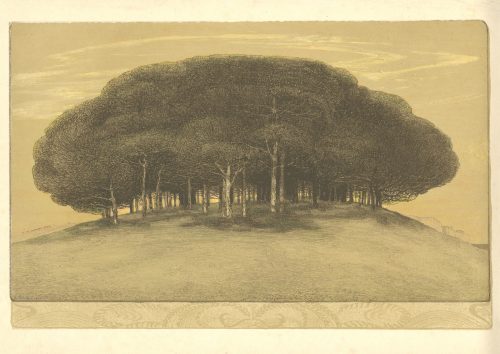
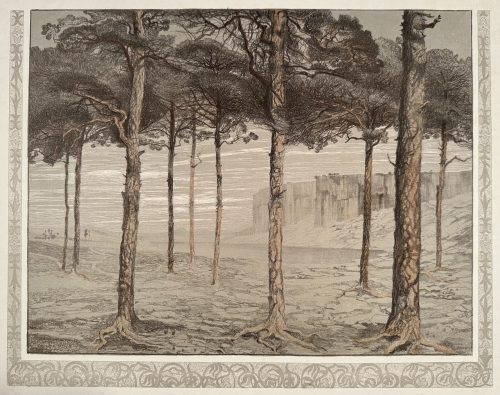
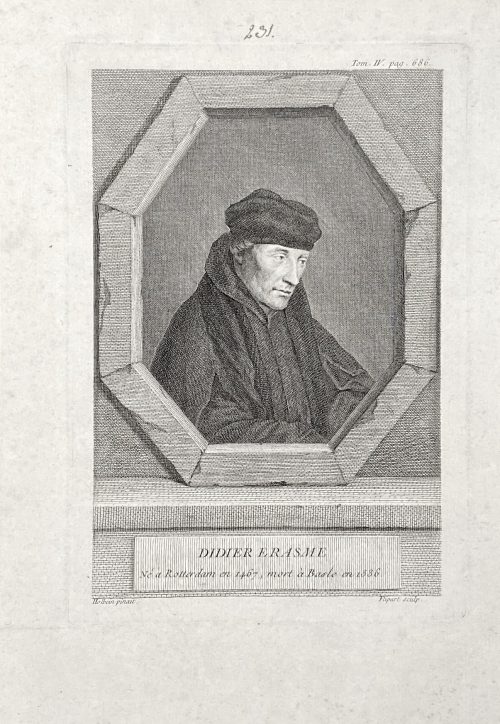
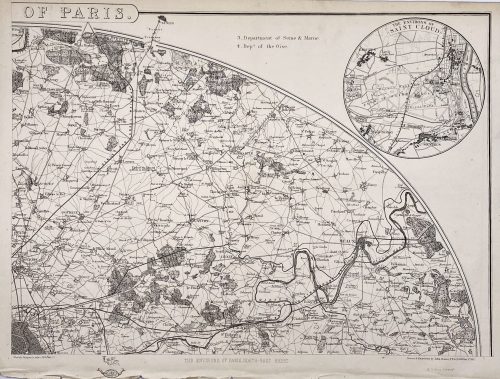
Dimensions: 34 x 47.5 cm each.
Contributors: Weller, Edward (British, 1819 – 1884) – lithographer. Dower, John Crane (British, 1791 – 1847) – artist, engraver. Dower, John James (British, 1825 – 1901) – artist, engraver (son of John Crane Dower).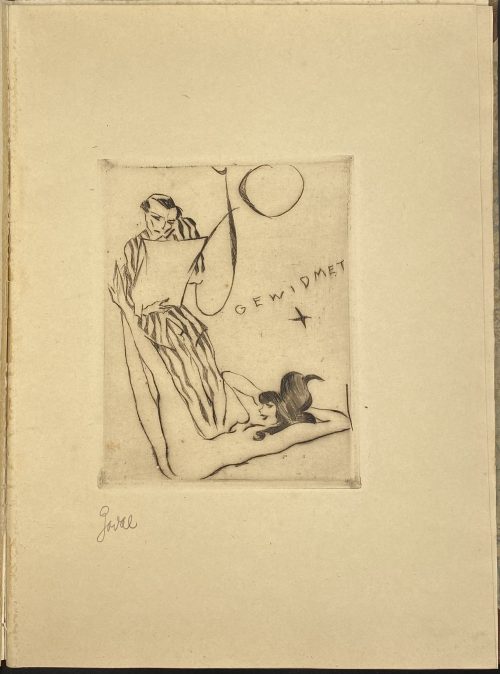
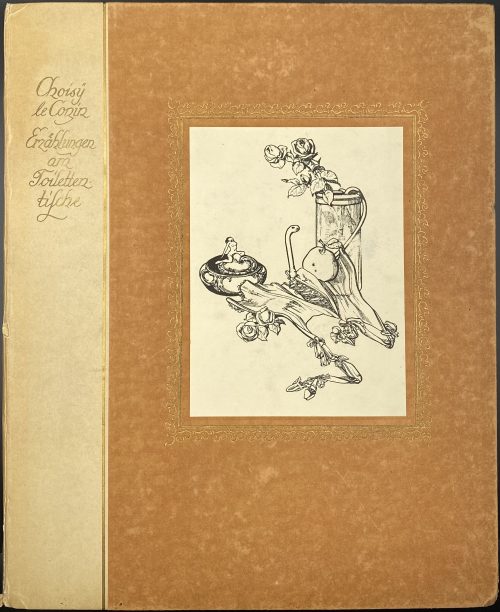
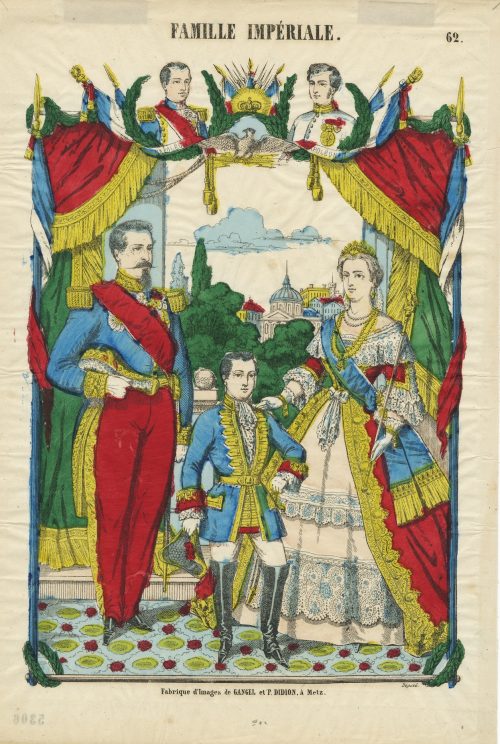
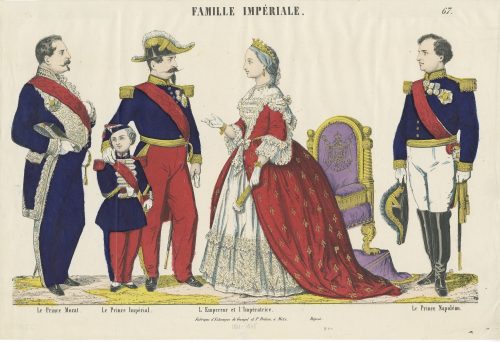
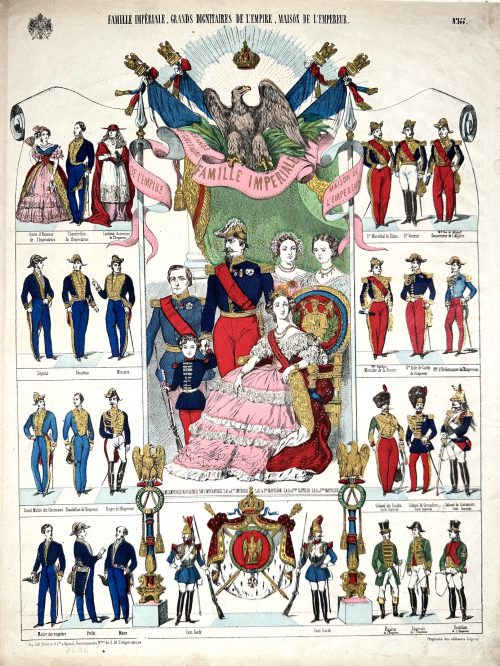
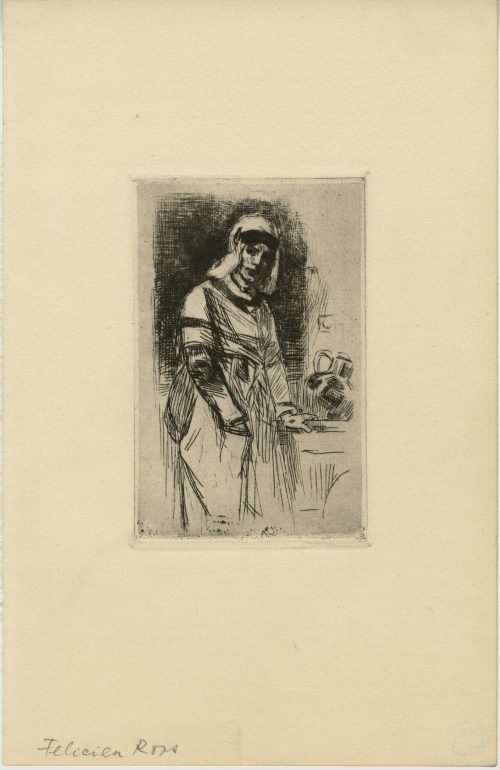
A woman from Antwerp or a servant, another title "Laitière anversoise"; 2nd state. Etching on wove paper. Owner's stamp LVM on verso.
Dimensions: Paper: 24.4 x 15.8 cm; Image: 12 x 7.5 cm
Catalogue raisonné: Arthur Hubschmid (1977): 343.